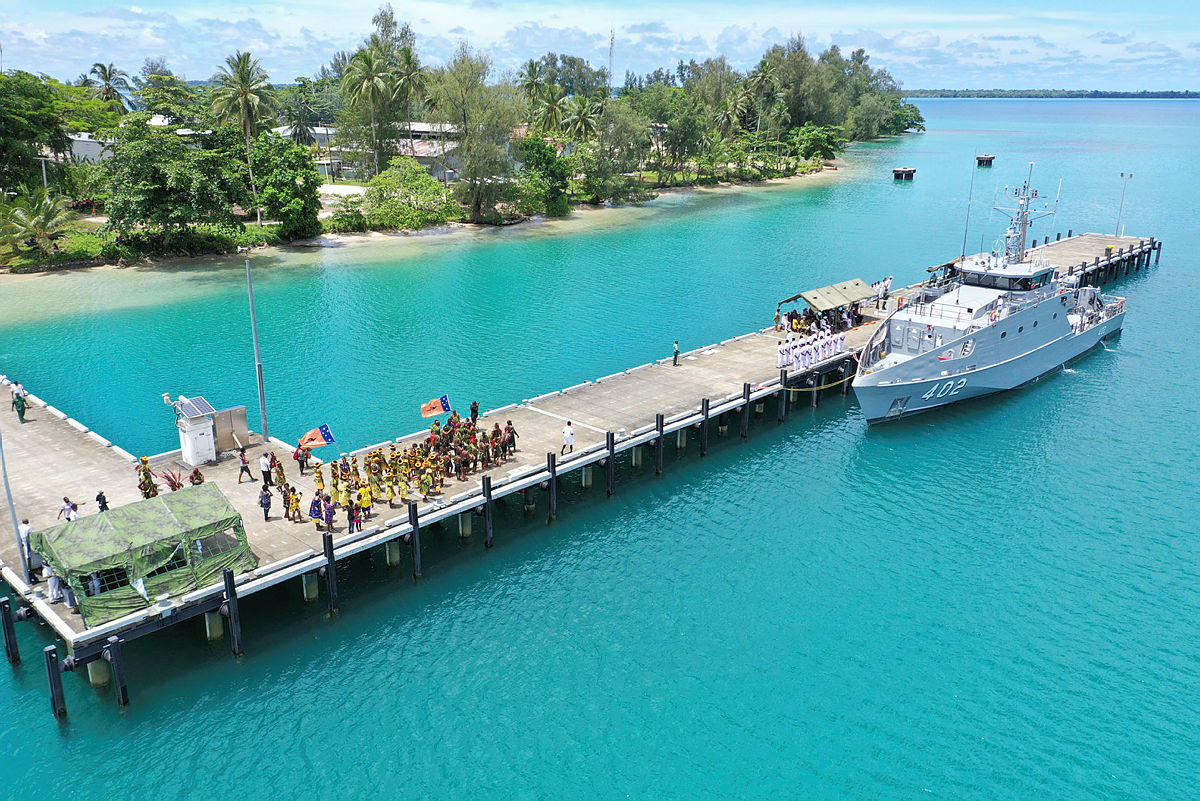
Australia’s Pacific security problem is simple: we’re not thinking big enough about our role and we have convinced ourselves that we’re incapable of moving quickly to counter China.
Canberra policymaking has dumbed down. Note how big policy announcements are made: decisions to double the size of our submarine fleet, stage a Pacific step-up, restart the Quadrilateral Security Dialogue and set up the AUKUS defence technology partnership—these are political judgement calls, often made in haste and in some desperation.
The thought bubble is handed to the public service, struggling with realities such as the absence of people and money to shape policy; procurement rules forcing endless delays for probity and value-for-money checks; and bothersome details such as the absence of a nuclear power industry, say, or the presence of other countries with their own ideas.
Policy creativity has been banished from the public service. Risk reduction is the prized skill in a world where elegantly managing Australia’s Pacific decline is what the smart brains settle for.
Australia needs more than a whiff of Ukrainian President Volodymyr Zelensky’s fighting spirit. Recall his response to US offers of evacuation: ‘The fight is here; I need ammunition, not a ride.’
Australia doesn’t get to ride away from its Pacific backyard, although US National Security Council Indo-Pacific affairs coordinator Kurt Campbell has done a powerful good in telling Solomon Islands Prime Minister Manasseh Sogavare that there are limits to American tolerance of Beijing’s bad behaviour edging forward under the guise of Honiara’s ‘sovereign choices’.
There is a lot of good work being done under the Pacific step-up. The policy shows that Scott Morrison understands the problem China presents to the region, but we are being crippled by slow processes and a lack of imagination.
The prime minister’s plan for a joint initiative at the Papua New Guinea Defence Force’s Lombrum Naval Base on Manus Island, announced in November 2018, is a case in point.
The intent was to ‘deepen our maritime security cooperation, including through increased Australian ship visits’. Preliminary work to rebuild the base didn’t start until mid-2020, then focused on refurbishing a chapel and putting up security fencing. It took a further year to start main works in June 2021. Never enthusiastic about a naval presence at Manus, Defence adroitly ensured that ‘operational facilities’ (a wharf) would be large enough only for PNG’s ‘Guardian-class patrol boats and small boat operations’. We are three and a half years down the track on the Manus plan, with little to show for it.
In January, Morrison announced that Australia would provide loan financing worth $850 million to upgrade a range of commercial ports in PNG. That’s a brilliant idea, but let’s put it into context—there is hardly a port or airport in the Pacific that isn’t being built, refurbished or run by Chinese companies.
This includes the new Momote International Airport that services Manus Island, built by the China Harbour Engineering Corporation and opened on Monday by PNG Prime Minister James Marape.
Labor’s proposals for development assistance, worker visas, extra fisheries patrols, and short-wave and TV broadcasting into the region all make sense, although the ABC shouldn’t run the latter. But this is the same piecemeal approach, flinging money at sometimes worthy thought bubbles. Where’s the strategy?
What should Australia do? First, we need to convey to Pacific islands leaders the danger China presents. It’s true that island governments prefer to focus on climate change, but they can’t wish away strategic reality.
As the functioning members of ANZUS, Australia and the US could invoke Article VIII of the treaty ‘to maintain a consultative relationship with States, Regional Organisations, Associations of States or other authorities in the Pacific Area in a position to further the purposes of this Treaty and to contribute to the security of that Area’. An ANZUS – Pacific islands consultation group should be created at the prime ministerial level. That should be supported by a larger, constant Australian and US military presence throughout the region.
Second, after the election a Pacific affairs minister should be in cabinet at least for that term of government. China didn’t stop its leaders travelling to the region during Covid-19. Australia did. Now there’s a need to rebuild ties at the most senior levels.
The Pacific affairs minister needs to tone down the language about the ‘Pacific family’ because Pacific islanders know when they’re being schmoozed. Instead let’s focus on intelligence briefings about what is really happening in the region. We need to listen more carefully to Pacific leaders and we need to ask for a respectful hearing about our own security concerns.
Most important, the minister will need top cover from the prime minister to be able to cut through Canberra process. We must not accept that it takes four years to build a small wharf.
Third, let’s work with Pacific islands leaders to form a response force, comprising units from Australia, the militaries from PNG, Tonga and Fiji, and police and agencies from the other Pacific islands countries. The Pacific response force could focus on disaster relief and mitigation, regional stabilisation and peacekeeping. Naturally, Australia will end up paying for much of this, but in so doing we are paying for our own security as well as that of the region.
Let’s say this will cost about $5 billion annually on top of all other Pacific-related activities. That amounts to only about 41 days of current defence spending. It’s worth the price to keep the Chinese military out of the region.
Australia has grown used to getting security on the cheap, thanks largely to a benevolent US. But we are in fantasy land to imagine that 2.1% of GDP will cover our defence needs in the future.

